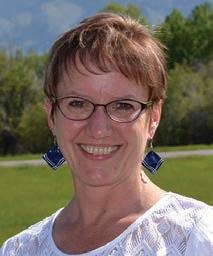
3 minute read
FROM THE HEADQUARTERS
it veered away from our founding members’ direction to be successful. This remains our focus today, and it is hard to argue that our appeal has never been broader or brighter.
The diversity within the American Simmental Association is one to celebrate and is also what I believe is a large part of our success over the last 20 years. H owever, I also see many challenges and opportunities that many member-driven organizations in the ag sector have had to navigate as the industry has evolved in many different facets. You need to be able to have programs and products in place that will allow you to be relevant to the very large operations, which are becoming more p reva lent, as well as the smaller operations and everything in between. The ASA has developed many programs over the years to help breeders achieve their goals: THE, PTP, CHR, CCG, FPC, and others that are available for all members to utilize, whether you have 20 cows or over 500 cows. By creating and offering many different programs and services, our membership has grown, registrations have continued to grow, and our association is in a great spot. We cannot rest on our laurels. The competition remains fierce not only from other breeds, but also from the private sector. How our association navigates this ever-changing industry is critical not only for the future of the ASA, but also to maintain and define a breed association’s role in the beef industry. I believe the ASA and our membership is up to the challenge. As we head into the summer months, may the grass be belly deep and the markets keep trending in a positive direction so we can all be rewarded for producing the best protein in the world. n

by Jannine Story, director, Performance Data Programs

As everyone knows, we have the largest multi-breed evaluation out there. But what benefit is that to you? I have had several conversations where breeders say, “I don’t want to put my other breed of cattle in your evaluation; it just costs money. There is no value in it.” Or, “You can’t ratio and rank purebreds (no matter the breed) against a half-blood. The half-bloods will make the purebred look bad because of the heterosis. Why would I do that?” So, I went to Wade to learn more about contemporary groups and the benefits of the multi-breed evaluation for our breeders.
If purebred calves and percentage calves were raised together and you report all your purebred calves in one contemporary group and the percentage animals in another, you are actually doing yourself a disservice. It might make sense to you to split them apart, so they aren’t being compared. It is true that the crossbred animals, on average, are going to have additional performance because of heterosis. But did you know the evaluation takes all of that into consideration? For example, if you have a purebred bull of one breed and a purebred dam of another, their progeny (F1) will have a significant boost in performance due to heterosis. However, when the calf is reported with the rest of its contemporaries, the heterosis is actually removed so the animal is on the same playing field as the other calves. So, the ratio and ranking results after the data is reported has already removed the heterosis piece so that the calves can be compared. Keeping them in the same contemporary group allows you to see your entire herd (all breeds and breed combinations) more accurately.
This is true whether the parents are both purebred breeds, or if one parent is purebred and the other percentage, or if you have two percentage parents. There is always going to be an adjustment for heterosis. So when you look at the adjusted weights on your calf crop, that is why the percentage calves have a bigger adjustment than the purebred calves.
The evaluation automatically splits bulls and heifers into separate contemporary groups. I have members ask about first-time heifers calving, and that they shouldn’t be compared to mature cows. We do a larger adjustment for first-time heifers than threeyear-olds. There is a slightly larger adjustment for three-year-olds than for four-year-olds, etc. A cow matures at about five years of age, so from five to about ten there is no adjustment. Cows older than that start to get adjusted again because of age and milk production going down.
There are a couple of ways to create contemporary groups. When reporting calf data, there is the HerdID column. This allows you to create contemporary groups at birth. If you had three different pastures, that would be a reason to split the group into three contemporary groups. Do you have a group being fed differently than the rest of the group? If so, that would be a reason to split the group. There is also a Pasture Unit under the Weaning section or Feed Unit under the Yearling section.
Reporting your complete calf crop, of all breeds and breed combinations, will benefit you, whether you are a seedstock producer or if you retain heifers. Allow the cream of the crop to shine!










